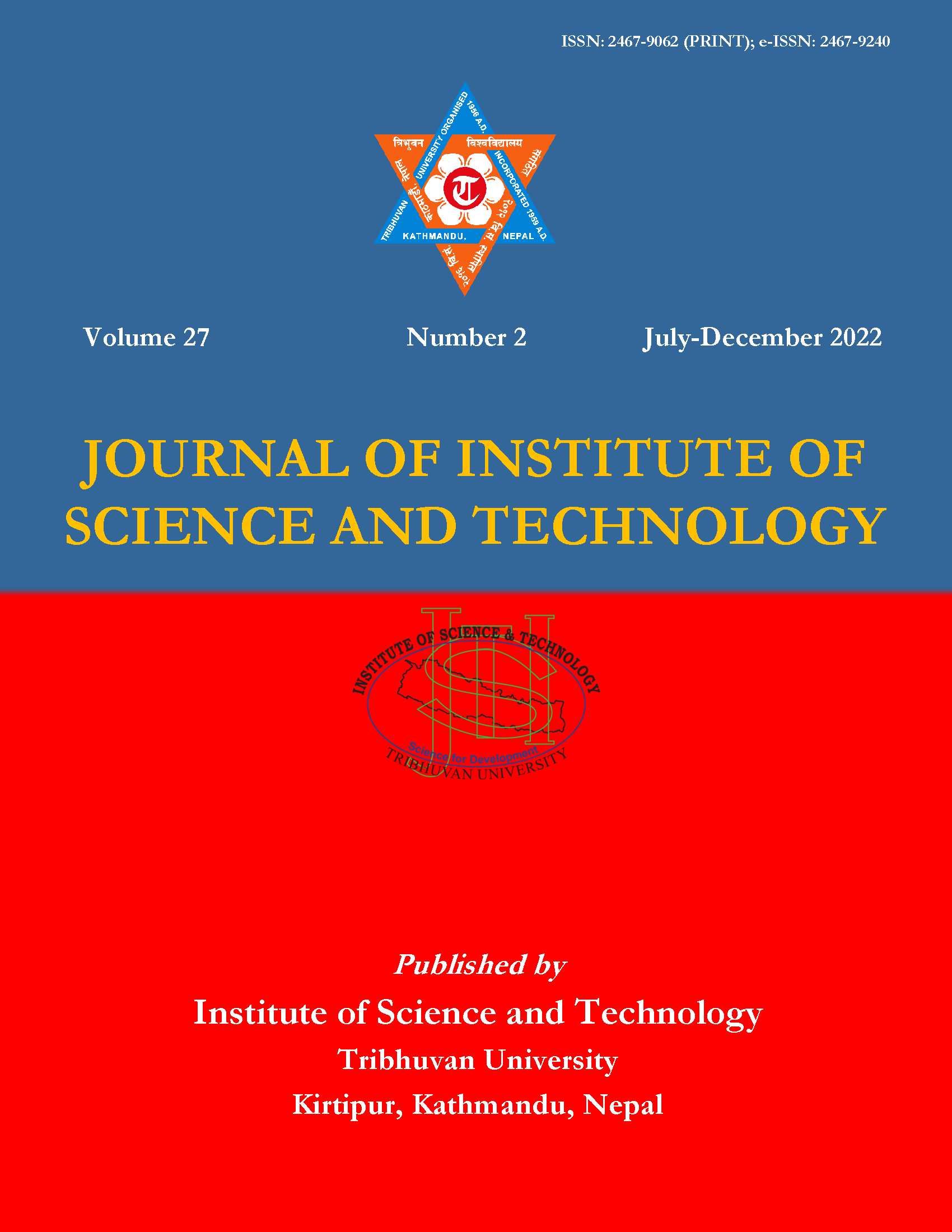Scientific Evaluation of Buddleja asiatica, Camellia sinensis, and Polygala arillata of Nepal
DOI:
https://doi.org/10.3126/jist.v27i2.51325Keywords:
96-well plate microreaders, α-amylase inhibition assay,, antimicrobial activity, DPPH assay, phytochemical screening, FT-IR spectraAbstract
Diabetes is one of the most prevalent diseases in the world. Medicinal plants remain to play an important role in the amelioration of diabetes and its complications. In this study, Buddleja asiatica, Camellia sinensis, and Polygala arillata were investigated for α-amylase inhibition, antioxidant, and antimicrobial activities. Methanolic extracts of these three plants were investigated for their potential antioxidant activity using DPPH assay. Total phenolic and flavonoid contents of extracts were evaluated by the following standard methods. The α-amylase inhibition assay was also carried out by starch-iodine assay and DNS assay method. Methanolic extract of B. asiatica, C. sinensis, and P. arillata exhibits a total phenolic content of 116.47 ± 6.62, 157.17 ± 18.79, and 44.27 ± 2.97 mg GAE per gm in dry weight of extracts (p < 0.0001) and flavonoid levels 5.99 ± 1.00, 34.28 ± 2.63, and 37.07 ± 2.24 (p < 0.0001) mg QE per gm in dry weights of extracts respectively. The extract showed promising antioxidant activity against DPPH with the IC50 values of C. sinensis (19.15 ± 4.32 μg/mL), B. asiatica (26.86 ± 2.00 μg/mL), and the standard the quercetin (2.36 ± 0.13 μg/mL). The extract showed modest α-amylase inhibitory activity. Methanolic extract of B. asiatica and C. sinensis were found effective against Staphylococcus aureus with zone of inhibition of 12.5 mm and 17 mm respectively. Therefore, obtained results support the traditional uses of these plants and also showed α-amylase inhibition activities although there are no reports about it.
Downloads
Downloads
Published
How to Cite
Issue
Section
License
Copyright (c) 2022 Institute of Science and Technology, T.U.

This work is licensed under a Creative Commons Attribution-ShareAlike 4.0 International License.
The views and interpretations in this journal are those of the author(s). They are not attributable to the Institute of Science and Technology, T.U. and do not imply the expression of any opinion concerning the legal status of any country, territory, city, area of its authorities, or concerning the delimitation of its frontiers of boundaries.
The copyright of the articles is held by the Institute of Science and Technology, T.U.




